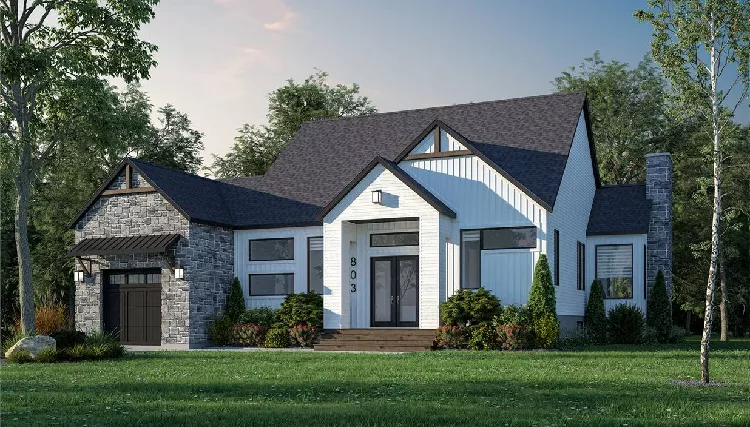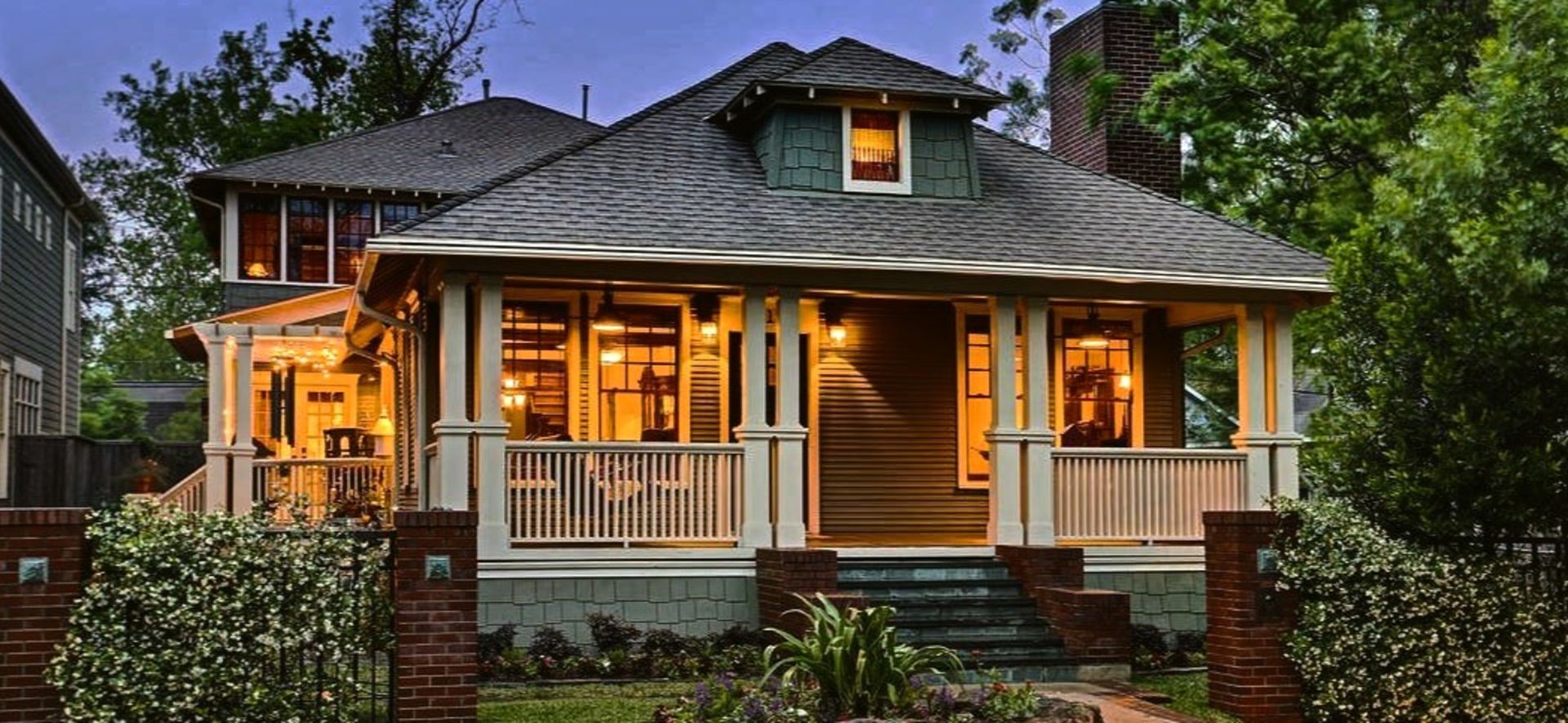The Duty of Arts & & Crafts Architects in Elevating Architectural Providers in Residential Style
Arts and Crafts architects considerably influence residential design through their commitment to workmanship and sustainability. They focus on handmade information and all-natural products, which boost both aesthetics and community identification. By entailing customers in the design procedure, these architects create distinct living spaces that reverberate with personal tastes. This method increases questions regarding the future trajectory of property architecture and its prospective effect on neighborhood dynamics. craftsman style house. What lies in advance for this ageless style philosophy?
%2520(2).webp)
The Principles of Arts and Crafts Architecture
The essence of Arts and Crafts architecture depends on its commitment to craftsmanship and simplicity. This architectural movement emerged in the late 19th century as a reaction to industrialization, highlighting the value of handcrafted information and all-natural products. The concepts of Arts and Crafts architecture prioritize performance and consistency with the environment. Frameworks commonly include low-pitched roofs, wide eaves, and revealed rafters, advertising a sense of unity with nature.
Artisans played a substantial function in this style, typically integrating decorative components like tarnished glass, ceramic tiles, and woodwork, which reflect local workmanship. The shade scheme often tends to be natural and controlled, allowing structures to mix perfectly into their environments. On top of that, the layout urges open floor strategies and communal rooms, promoting a sense of togetherness. In general, the principles of Arts and Crafts architecture commemorate the charm of simpleness and the significance of human connection to both nature and community.

Sustainable Practices in Residential Style
While the need for eco responsible living continues to expand, lasting techniques in domestic design have obtained substantial grip amongst architects and property owners alike. Architects are significantly integrating energy-efficient technologies and lasting products right into their designs, aiming to reduce carbon footprints and enhance energy conservation. Techniques such as easy solar style, eco-friendly roofs, and rainwater harvesting systems are becoming standard parts of modern-day household architecture.
The choice of locally sourced materials lessens transportation discharges and sustains local economies. Focus on all-natural light and ventilation not only boosts indoor air top quality however also minimizes reliance on fabricated lighting and environment control systems. These sustainable practices show a dedication to maintaining the environment while offering house owners with comfy, reliable home. As understanding of ecological problems expands, the combination of sustainability in property layout is positioned to come to be a specifying characteristic of contemporary architecture, directed by the principles established by Arts and Crafts architects.
Personalization and Customization in Home Style
Customization and personalization in home design have actually become key trends in reaction to the growing wish for distinct living atmospheres that show individual tastes and way of livings. House owners progressively seek to tailor spaces that reverberate with their individual identifications, bring about an extra significant link with their home. craftsman style house. This motion motivates architects to engage clients in the layout procedure, promoting collaboration that guarantees the last end result symbolizes the property owner's vision
Aspects such as bespoke designs, custom-made materials, and customized coatings permit a diverse array of expressions in property style. Arts and Crafts architects play a pivotal duty in this development, emphasizing workmanship and top quality. Their concentrate on integrating imaginative aspects with functionality warranties that each home is not only aesthetically pleasing however also distinctly fit to the inhabitants' requirements. Consequently, this focus on personalization enhances the overall residential experience, developing rooms that are both personal and long-lasting.

The Influence of Arts and Crafts Architects on Area Aesthetic Appeals
As areas develop, the impact of Arts and Crafts architects substantially forms their visual landscape. By stressing handmade information, all-natural products, and typical building and construction techniques, these architects create homes that reverberate with their environments. Their layouts usually incorporate local flora, textures, and shades, fostering a sense of harmony between constructed environments and nature.
The Arts and Crafts activity promotes area identity with building continuity. By urging house owners to embrace comparable design concepts, areas establish a natural personality that improves aesthetic appeal. This architectural harmony not just enhances the visual experience but additionally instills a sense of satisfaction amongst locals.
The focus on sustainability and workmanship in Arts and Crafts architecture aligns with contemporary values, making these layouts appropriate in modern settings. Ultimately, Arts and Crafts architects add substantially to the total appeal and cultural stability of communities, leaving a long-term effect on their aesthetic legacy.

Future Trends in Arts and Crafts Architecture
With an increasing emphasis on sustainability and personalization, future fads in Arts and Crafts architecture are poised to blend conventional craftsmanship with contemporary advancement - craftsman style house. Architects are likely to prioritize environment-friendly materials, utilizing reclaimed timber and natural rock to boost the sustainability of household layouts. The combination of wise home innovation will become commonplace, enabling individualized living experiences without jeopardizing aesthetic integrity
In addition, the resurgence of artisanal methods will cultivate a renewed appreciation for handmade aspects, such as bespoke cabinets and customized tile job. Future designs might also mirror an emphasis on community-oriented rooms, encouraging interaction and link amongst residents. Outside living areas will certainly get prestige, seamlessly incorporating nature into the home setting. As Arts and Crafts architecture progresses, it will certainly continue to recognize its roots while adjusting to modern requirements, developing harmonious areas that reflect private worths and lifestyles.
Regularly Asked Concerns
What Inspired the Arts and Crafts Activity in Architecture?
The Arts and Crafts motion in architecture was inspired by a response versus industrialization, stressing handcrafted visit their website top quality, all-natural materials, and a go back to standard craftsmanship, aiming to produce harmonious, practical spaces that celebrated creativity and look at this web-site uniqueness.
How Do Arts and Crafts Architects Collaborate With Clients?
Arts and crafts architects collaborate with clients with open discussion, focusing on personal demands and looks. They stress craftsmanship and sustainability, promoting a partnership that incorporates the customer's vision with the engineer's know-how in layout and products.
What Products Are Commonly Used in Arts and Crafts Homes?
Typical materials in Arts and Crafts homes consist of all-natural timber, stone, and brick, emphasizing craftsmanship and organic appearances. These components develop a cozy, welcoming ambience, mirroring the activity's devotion to top quality and simpleness in layout.
Just how Do Arts and Crafts Layouts Improve Indoor Living Areas?
Arts and Crafts styles improve indoor living spaces by promoting natural light, open flooring strategies, and handcrafted information. These aspects foster a cozy, welcoming environment, encouraging a connection in between homeowners and their settings with thoughtful, practical aesthetic appeals.
What Are Some Famous Examples of Arts and Crafts Architecture?
Famous examples of Arts and click for more Crafts architecture consist of the Wager House, Greene and Greene's masterpiece in The golden state, and the Robie Home by Frank Lloyd Wright. These structures showcase handcrafted information and harmony with nature, specifying the activity's essence.